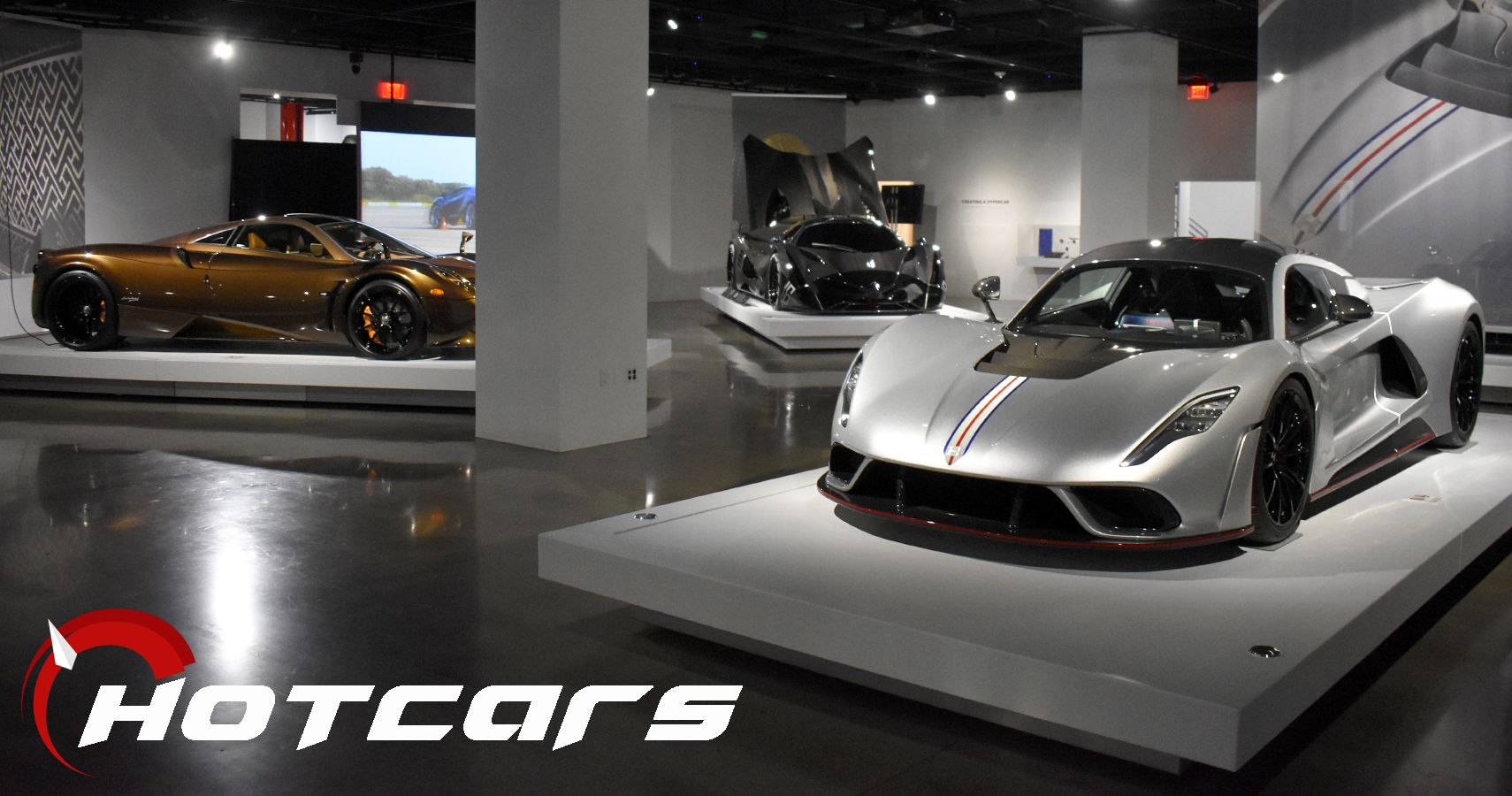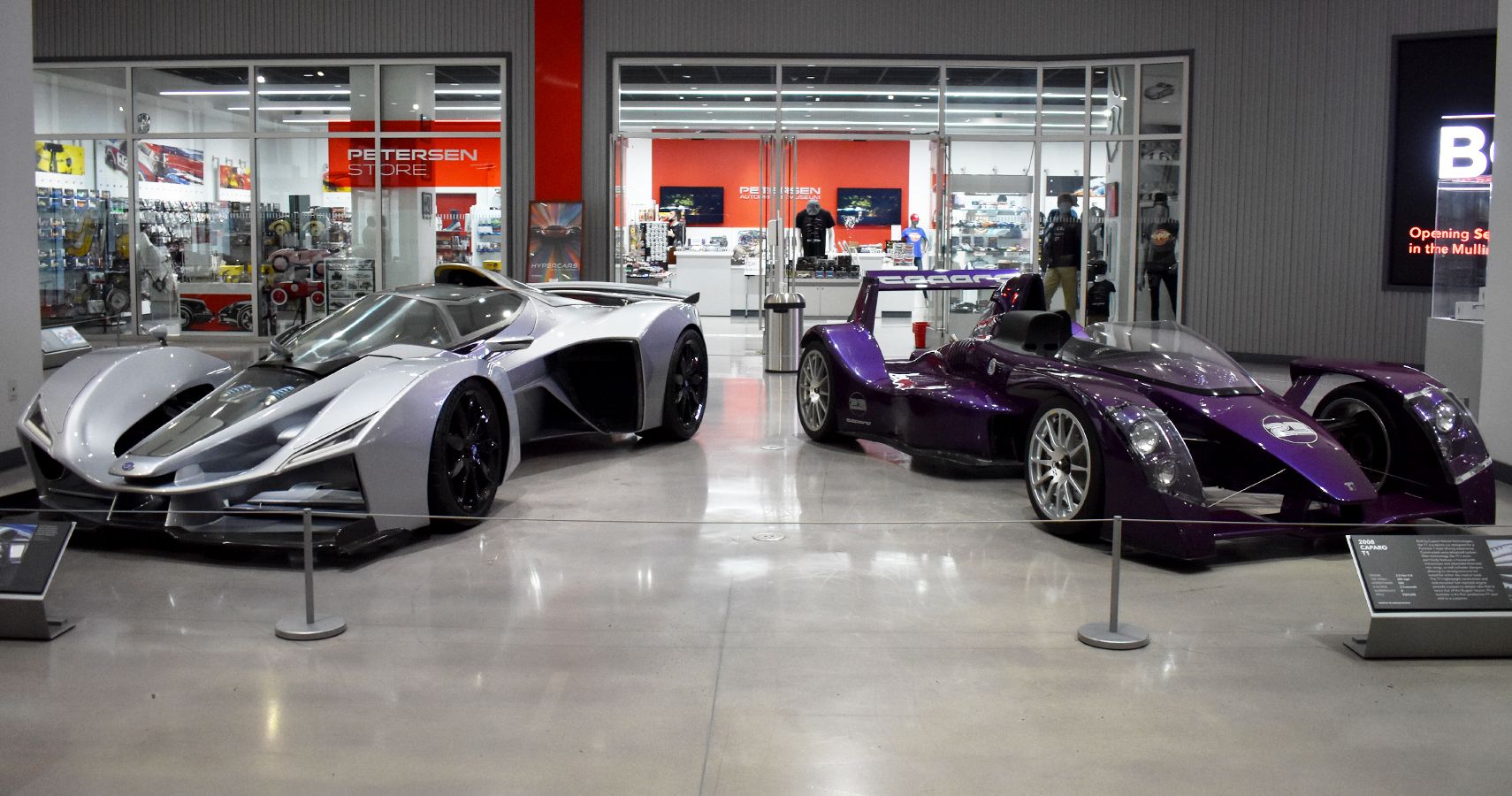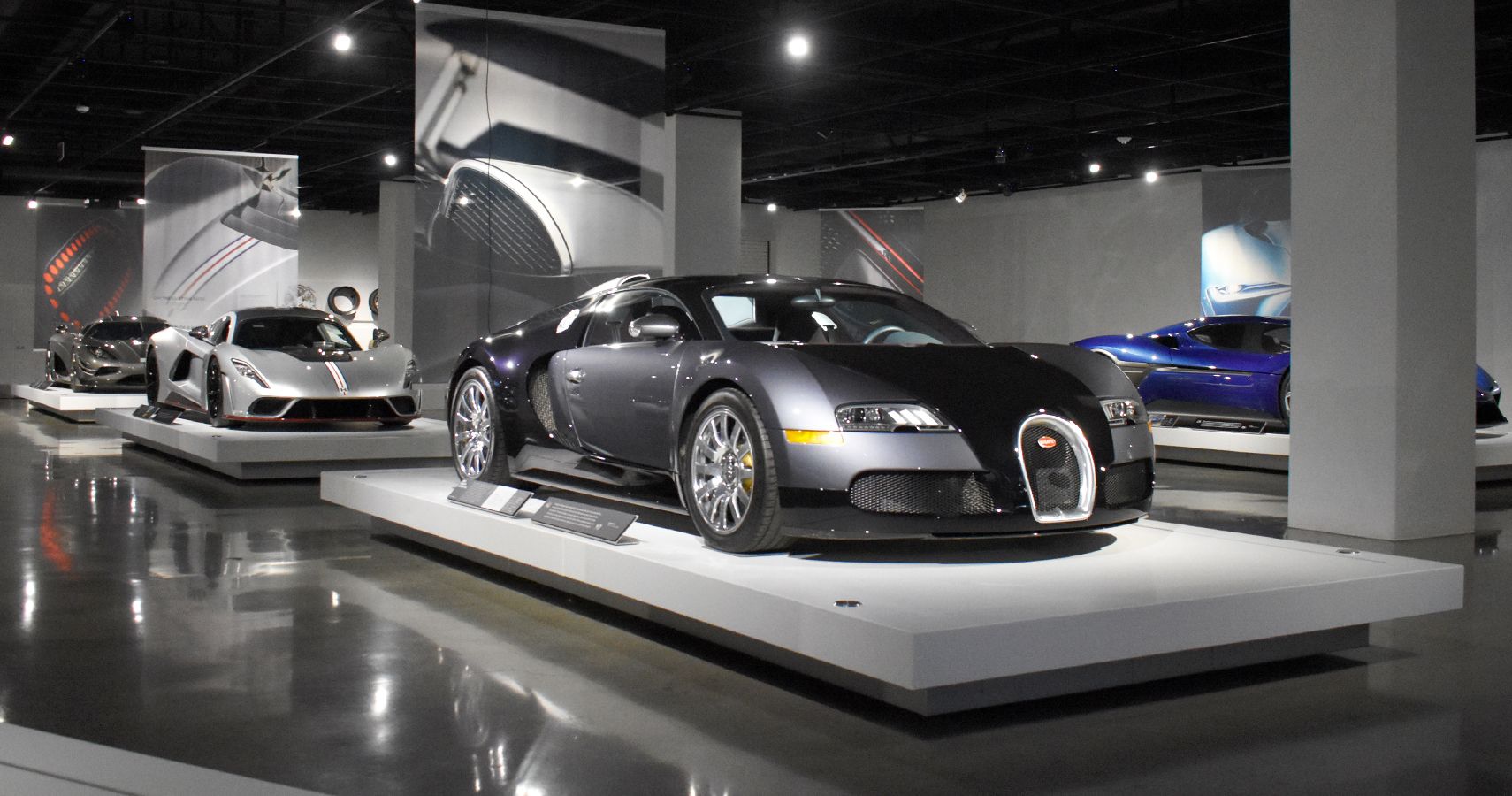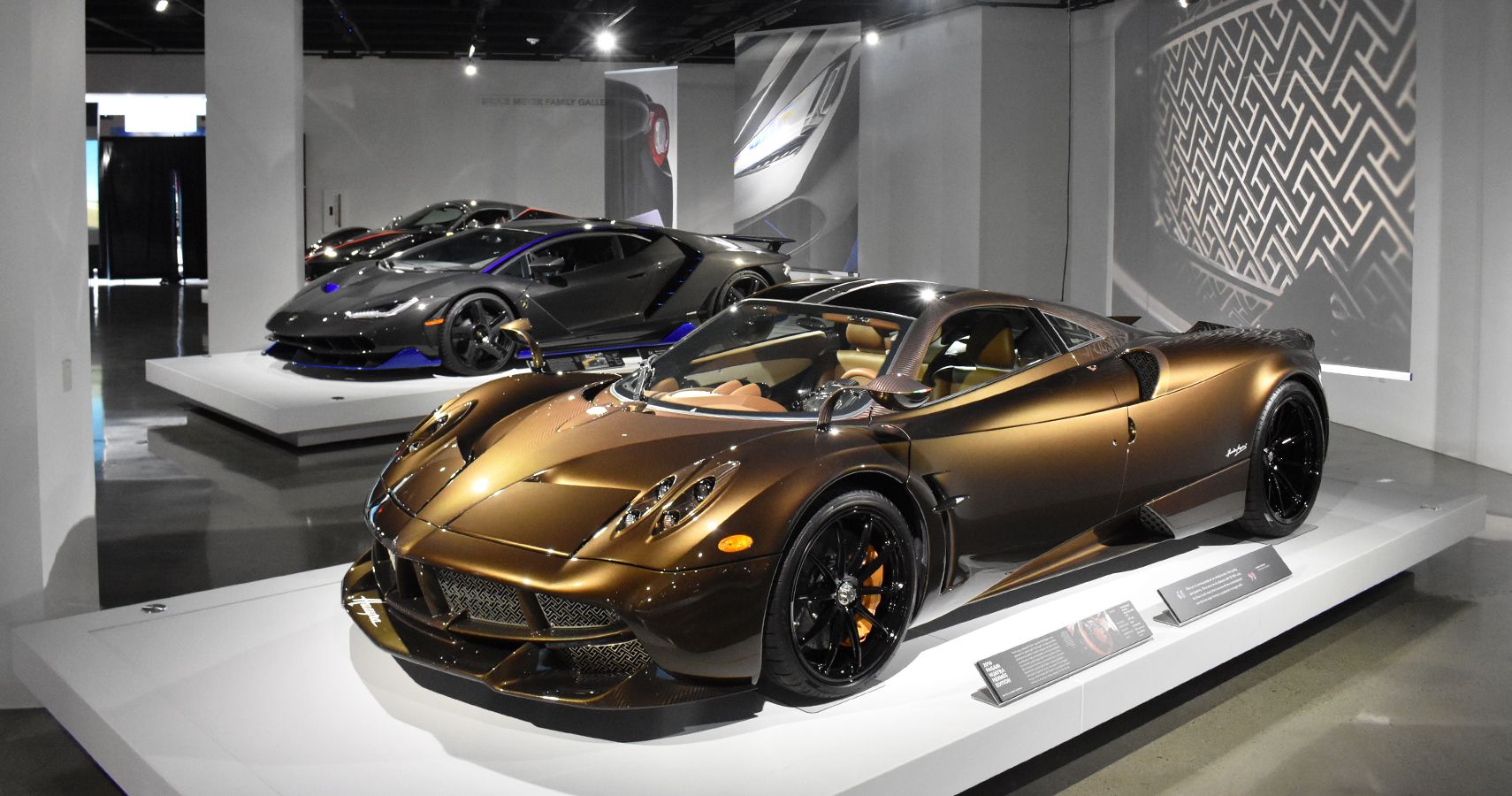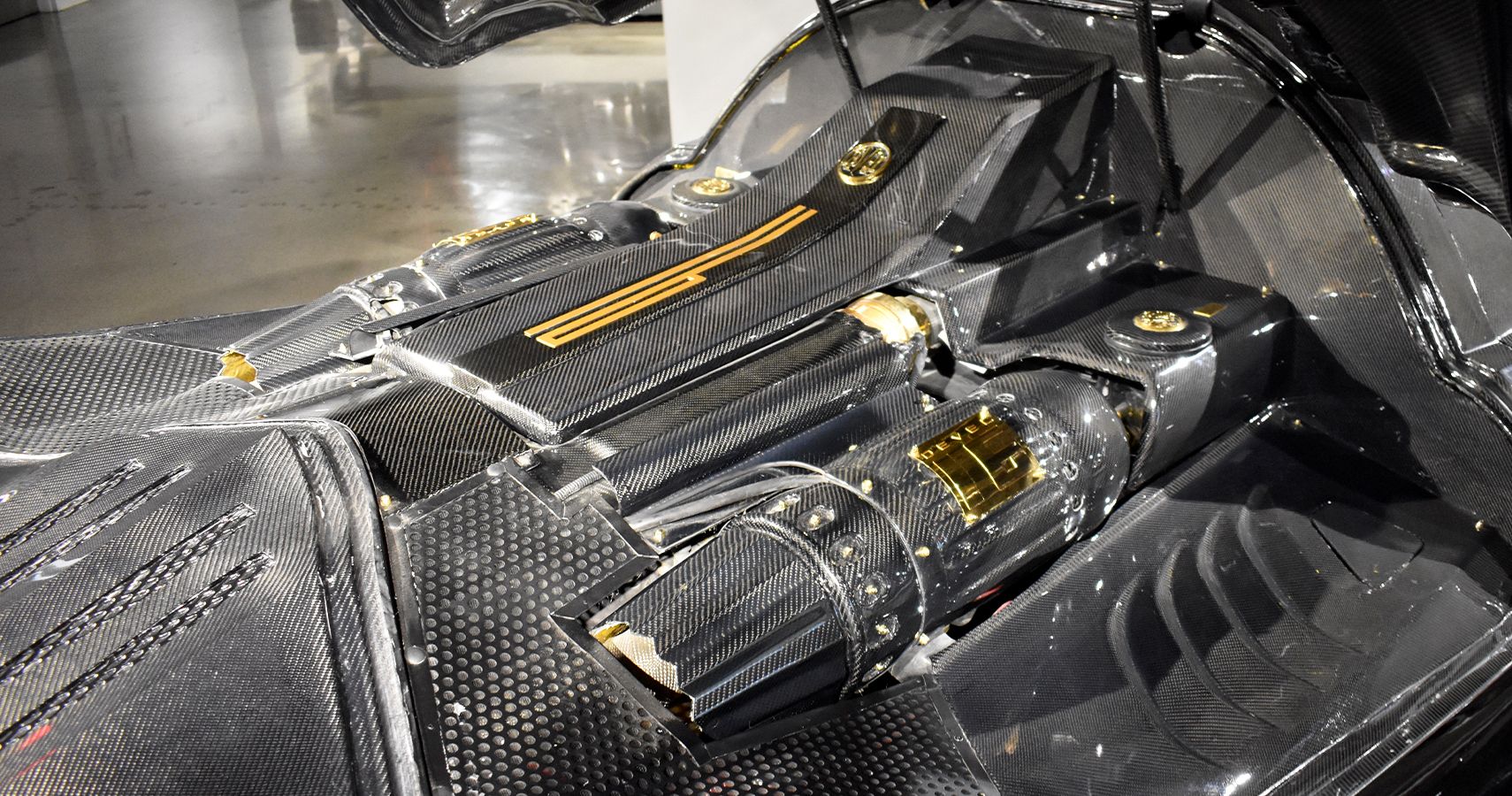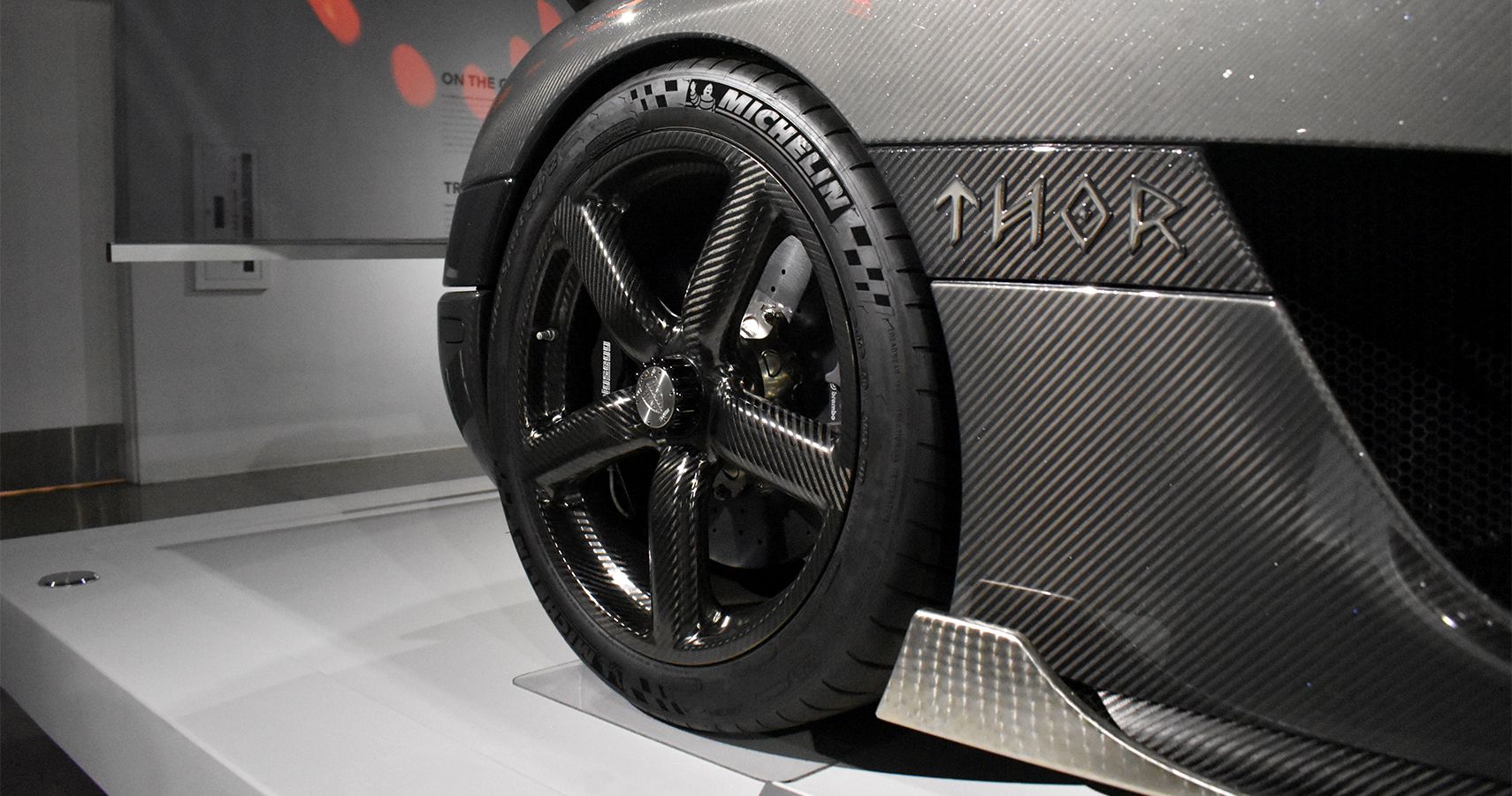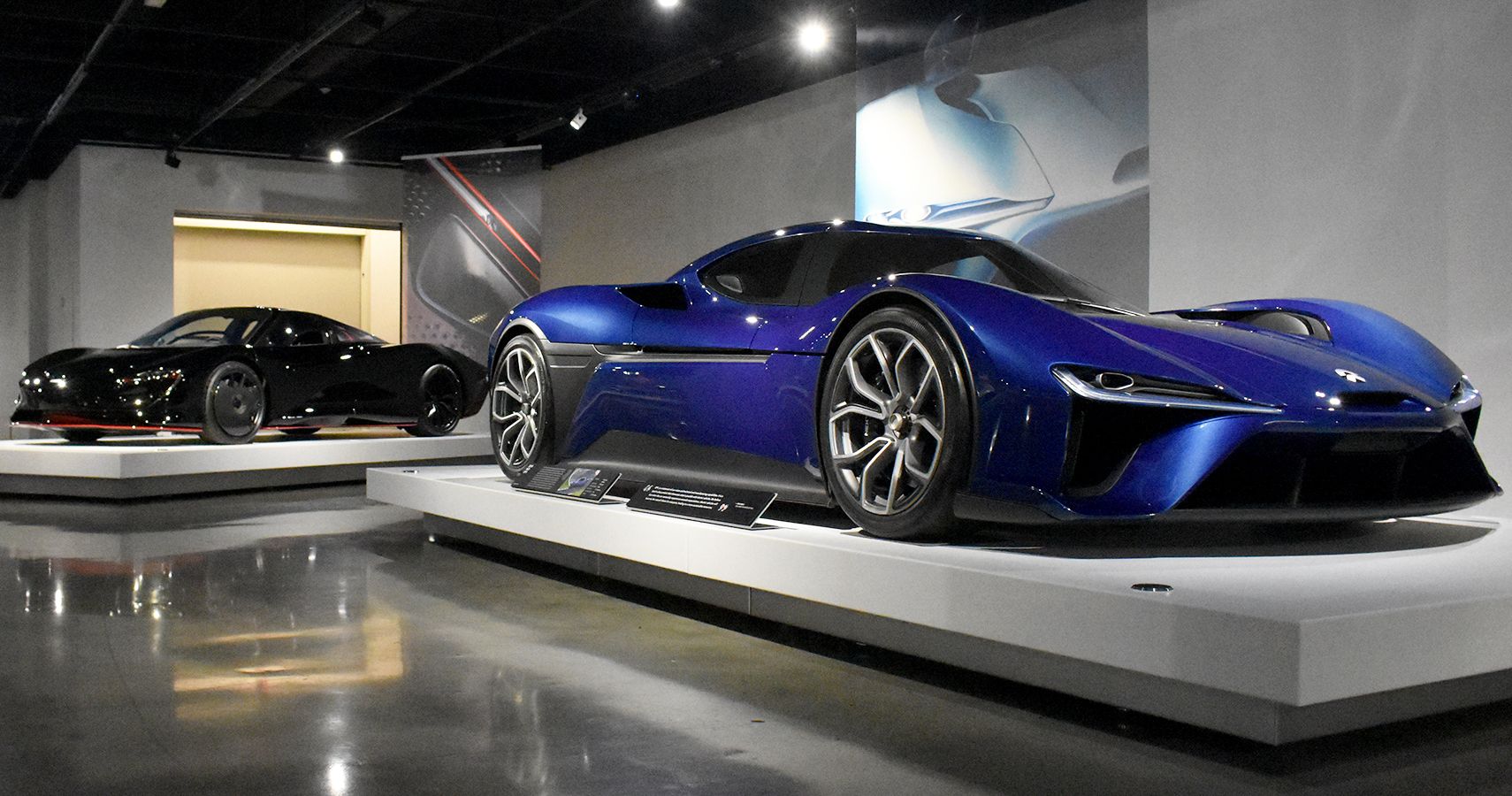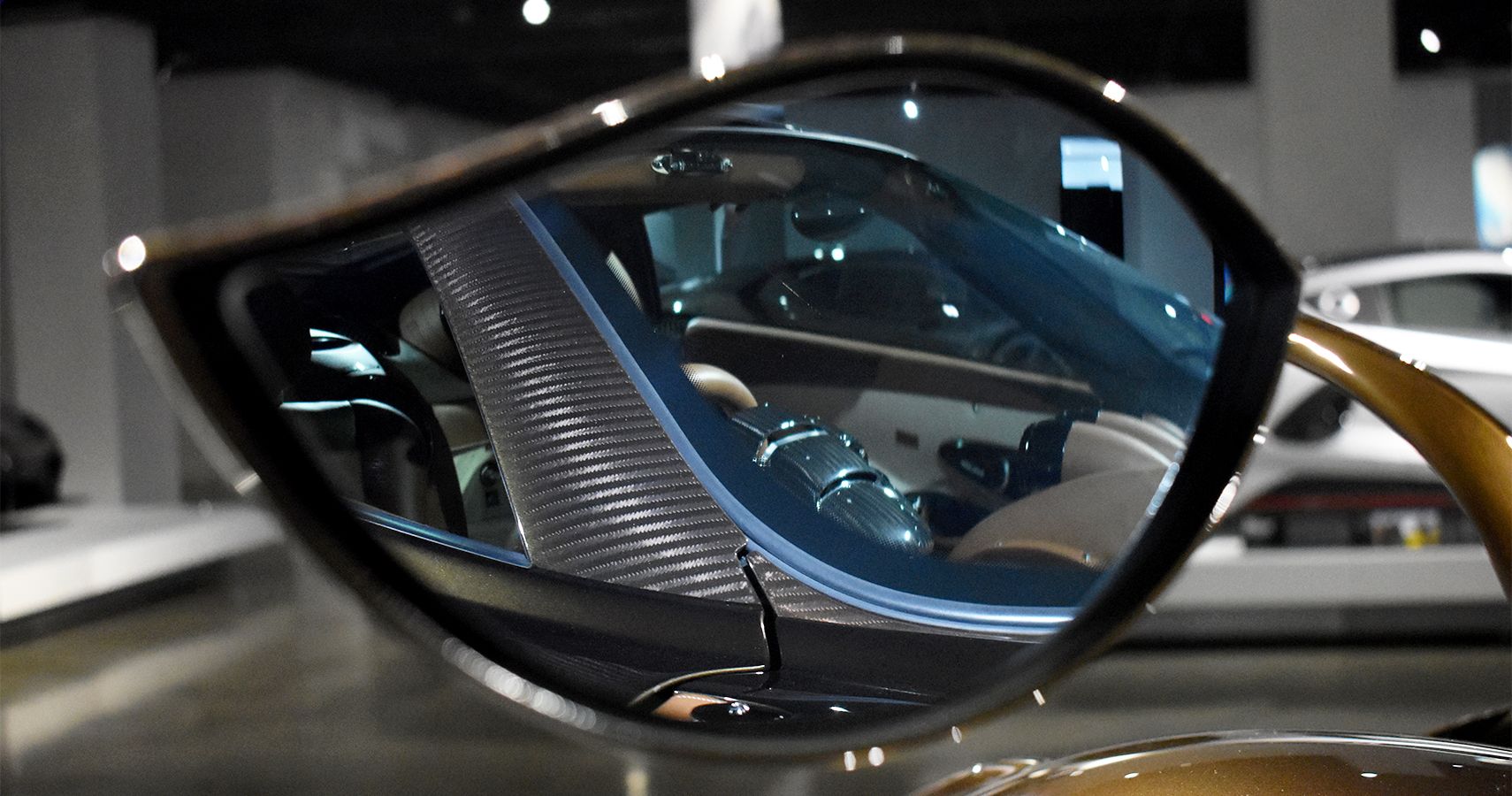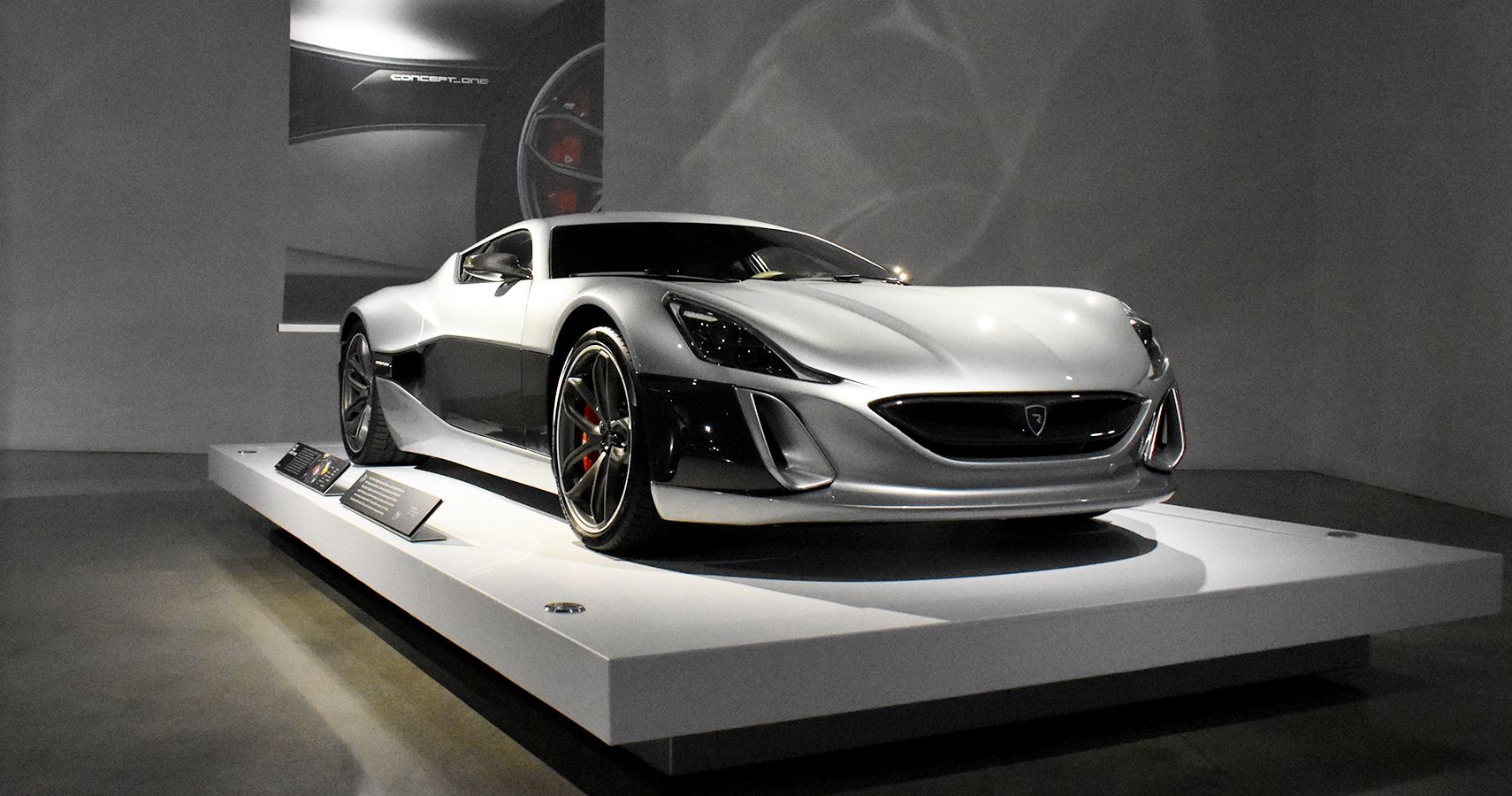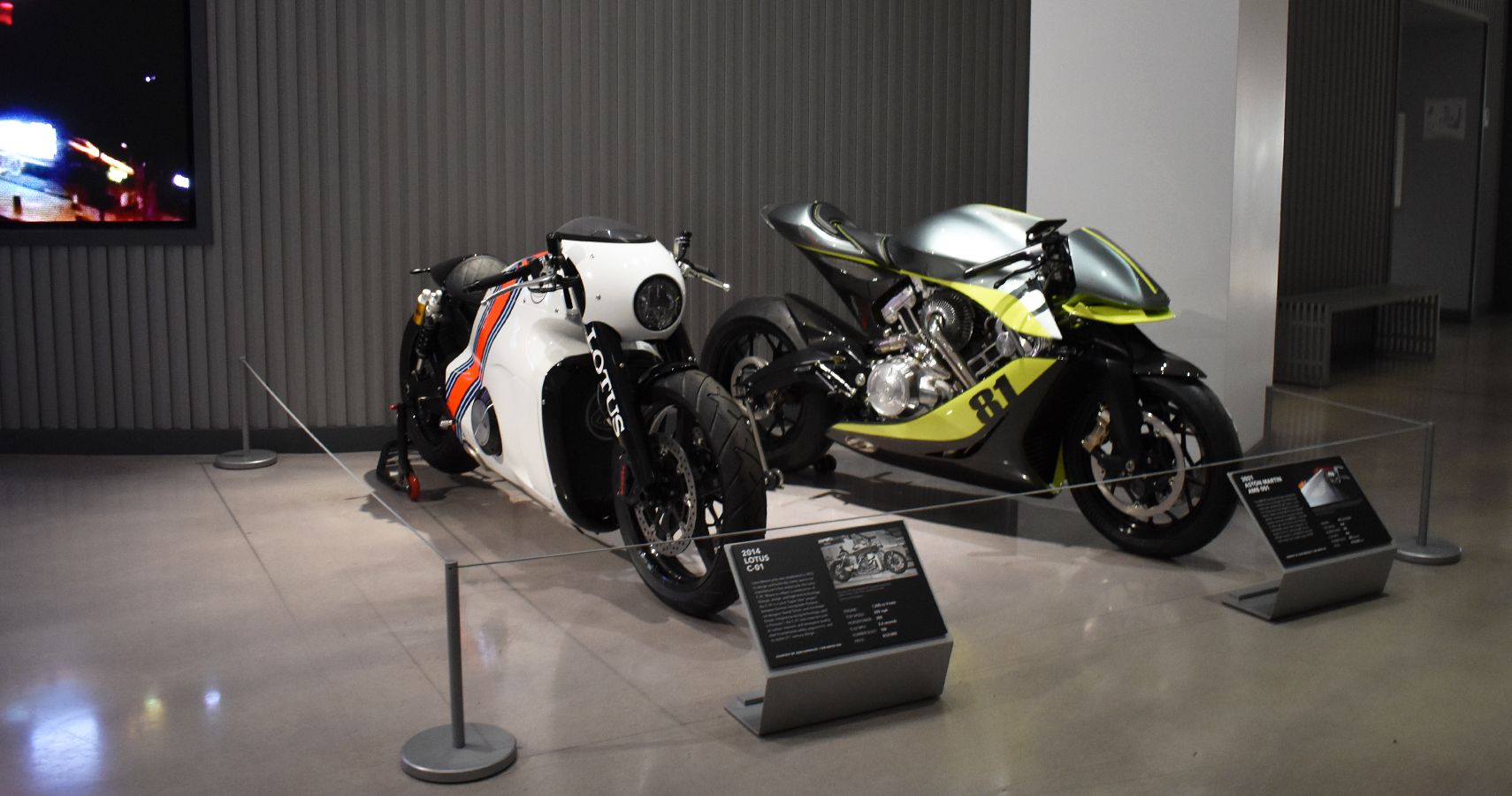A new exhibit featuring some of the world's most exclusive, expensive, and powerful hypercars opens at the Petersen Automotive Museum in Los Angeles this Saturday, December 4. The assemblage of multi-million-dollar masterpieces and early prototypes explores the last 15-plus years of peak automotive development, as the world of hypercars pushed past even Formula 1 racing to pioneer new engineering and design feats that led to four-figure horsepower stats and 300-mile-per-hour speed targets across the globe.
An undeniably excessive celebration of peak internal combustion, the Petersen's exhibit officially titled "Hypercars: The Allure of the Extreme" also hints at the performance potential made possible by an electric future—a future that approaches more quickly than ever with each passing day. Hypercars arguably rendered 0-60 times obsolete year ago, but instantaneously available EV torque now delivers brutal acceleration to the masses. The only question remains where the hypercars of tomorrow can take the automotive-obsessed public next.
Welcome To The Petersen Automotive Museum
I visited the Petersen during regular hours, though the curtained-off hypercar exhibit kept me away from crowds. But everyone planning to visit should know that the museum requires masks and checks for either proof of vaccination or a recent negative Covid-19 text before entry. After walking into the lobby, even now, teasers for the unopened exhibit include greetings from a McLaren P1, RAESR Tachyon Speed prototype, Aria FXE concept, and the two hardcore vehicles seen above.
To the right, the 2008 Caparo T1 sure looks about as close to a Formula 1 or Indycar as possible. The nearly open-wheeled design employs a honeycomb monocoque, adjustable front and rear wings, and a staggered two-seat arrangement. Caparo only built eight, and this is the first one sold—motivation comes courtesy of a 3.5-liter V8 producing up to 583 horsepower. The obviously newer, though surprisingly similar, vehicle to the left represents the latest incarnation of iconic French coachbuilder Delage, the D12 that will pair hybrid power with a 7.6-liter V12 in a central-seater with a vertically opening roof canopy.
The Bugatti That Inaugurated An Era
The cars that await guests upstairs, however, trend less in the direction of out-and-out open-wheeled racers and more towards obscene power and unbelievable exclusivity. Of course, the Petersen couldn't help but start things off with the Bugatti Veyron, which arguably inaugurated the hypercar era with a quad-turbocharged W16 engine capable of 987 horsepower when it debuted back in 2005. The Veyron remained in production all the way through 2015, though all the many Chiron and Divo variants today can trace their heritage right back to the original.
As awesome as the Veyron was—and still is—the design looks heavy and bloated compared to most of the sleeker, angular hypercar designs of today. Sitting directly behind it is the long-awaited Hennessey Venom F5, which just began deliveries after years of promise and still needs to prove capable of achieving John Hennessey's 311-mile-per-hour top speed target.
A One-Off Version Of A Limited-Production Hypercar
Even among some of the world's most striking designs, a unique Pagani Huayra still stands head-and-shoulders above the rest. This 2016 Hermés Edition belonging to Manny Khoshbin features the same insectoid, futuristic shapes as other Huayras, but its carbon fiber and titanium skin shines all the brighter when contrasted against the same leather on the interior that Hermés uses to craft luxury handbags.
Now just imagine seeing a Pagani like this roll up to a cars and coffee meet in Malibu one Sunday morning.
Visiting Long-Awaited Myths In Real Life
While a Pagani in Malibu might seem expected, one hypercar that absolutely nobody expects to see on any public road is the Devel Sixteen. Something of a joke among gearheads, Devel reportedly began development of the Sixteen well over a decade ago, with little in the way of proof that a 5,000-horsepower 12.8-liter V16 would ever materialize in real life. But then, earlier this year, footage reportedly showing testing of the aerospace-inspired hypercar emerged online. And now, a Devel Sixteen awaits the general public at the Petersen for inspection—albeit with a V8 mounted amidships in the unbelievably long carbon-fiber spaceship of a body.
Carbon Fiber Is The New Black
Just about every car in this exhibit features carbon-fiber construction, but few more so than the last Koenigsegg Agera ever built, which the Swedish firm named Thor. Thor's exposed carbon weave extends to the car's side skirts, wheels, and even badging—no surprise given the Agera's former distinction of holding the world record for fastest roadgoing car with a top speed of 277.9 mph. Fun details on Thor include a vertical dorsal fin and a rear wing bigger than the power-to-weight-focused Agera One:1.
Some Surprises, Too
A couple of cars gave me little surprises at the Petersen, including the McLaren Speedtail stretched long and low in one corner. Does the Speedtail truly count as a hypercar? Sure, it costs $2 million and up, the exterior design builds upon the P1 with a ludicrous extension at the rear, a central driver's seat harkens back to the F1, and it employs a hybrid drivetrain producing over 1,000 horses. But even McLaren puts it more in the Hyper-GT class.
The other car seen above left me searching my memory gateway. For those like me who don't recognize the shape, it's a Nio EP9 that set a number of records for laps at the Circuit of the Americas, including while driving itself, though it was shod in racing slicks at the time. Production of this all-electric Chinese hypercar began back in 2016 and it serves as a rolling advertisement-meets-testbed for technology that Nio plans to use in cars built for average consumers.
Looking In The Rearview
In some ways, any gasoline-powered hypercar built recently feels like an exercise in futility. We're lucky to be witnessing an era when the best internal-combustion engines that will ever be built required endless development and engineering to produce such ungodly power and acceleration. But now, a four-door Tesla can keep up with most of these six-figure stunners without breaking a sweat. And the truth remains that 99.9% of hypercar owners will never even come close to pushing their cars anywhere near the limits of performance.
The Dawn Of A New Era
The EV transition emerged as a true takeover this year, when upstart Croatian manufacturer Rimac seemed to explode on the scene with enough proprietary tech to convince Volkswagen AG to form a strange multi-headed conglomerate combining Bugatti and Porsche with the new company. Rimac's first Concept_One sits in one corner of the Petersen's new exhibit, the all-electric precursor to the Nevera (not to mention Mate Rimac's plans for world domination).
Even Hennessey—despite the as-yet-unproven potency of the Venom F5 and the company's close associations to big-block power and Texas oil—posted on social media earlier this week to reveal a sketch and plan for a new six-wheel-drive all-electric hypercar called Project Deep Space.
Not Just Hyper-Cars
While the new show highlights the hypercar industry's transition from gasoline to electrification, the Petersen also included a couple of motorcycles that push the limits of performance. To the left, a 2014 Lotus C-01 could crack 200 miles per hour, while to the right, an Aston Martin AMB 001 represents the British bespoke builder's first foray into two-wheeled locomotion. And yet, both highlight the exhibit's notable omissions from Lotus and Aston—the Evija EV and V12-powered Valkyrie, respectively. Perhaps less surprising is the absence of the world's current fastest road-going car, the SSC Tuatara (which suffered a trailer rollover earlier this year on the way to more top-speed testing).
The Petersen will rotate different hypercars through the exhibit from December 4 through September 22 of next year, when a second wave will take over until May 14, 2023. By then, the entire concept of a hypercar will likely have changed again—to hydrogen power, six-wheel-drive, or who knows what. In the meantime, the Petersen's newest exhibit allows visitors to get up close and personal with some of the most iconic cars built in the modern era.
Sources: petersen.org, hennesseyspecialvehicles.com, motorauthority.com, and lotuscars.com.

